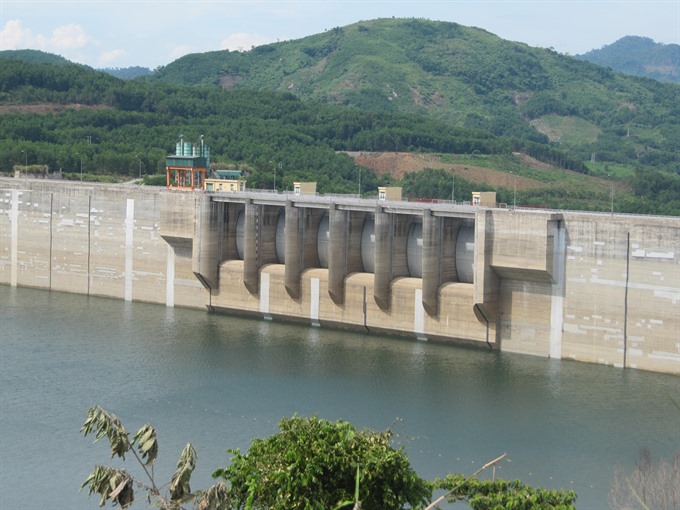 Society
Society

The central province of Qhang Nam plans to build four hydro-power plants in the mountainous district of Nam Trà My for socio-economic development of a key national ginseng centre.
 |
| Dam of the Sông Tranh 2 hydro-power plant in Quảng Nam Province. — VNS Photo Công Thành |
QUẢNG NAM — The central province of Quảng Nam plans to build four hydro-power plants in the mountainous district of Nam Trà My for socio-economic development of a key national ginseng centre.
The plan was submitted by the provincial People’s Committee at the province’s people’s council meeting last week.
The chairman of the district’s People’s Committee, Hồ Quang Bửu, told the Việt Nam News that the four hydro-power plants will supply power for 80 per cent of the population. Currently only 30 per cent have accessed the national power grid through a 35kv line from Tam Kỳ city, so it often suffers power cuts during storms and the rainy season.
Bửu said the hydro-power plants will not require a reservoir and dam, and will be supplied with water through tunnels from streams in the basin of the Tranh River.
He said the four-plant project is included in the district’s Master Plan for developing the area into the national ginseng farm and production centre.
The four plants were designed with a total capacity of 78.8 MW (megawatts) to produce 258.38 kilowatt per hour. They will cover an aea of 144ha, of which 60ha is forestry land, but no land clearance costs will be antailed since the area is uninhabited.
The district has planned a ginseng area on 15,000ha in seven mountainous communes in the district for 2030, and infrastructure projects with a total investment of VNĐ9 trillion (nearly US$400 million).
Last year, seven investors agreed to invest $221 million to farm ginseng and process plants of essential oils, cosmetics, tonic drinks and capsules from ginseng in the district.
According to the district, more than 42,000ha of primary forests have been well preserved in development of the ginseng and native herbs.
According to a report by the provincial industry and trade department, Quảng Nam Province planned 32 hydro-power plants, of which 11 have been put into operation, with a total capacity of 450MW (supplying 1.75 billion kilowatts per hour each year). More than 1,420ha of forest were cleared for the 11 plants.
The rest of the planned facilities - 23 in number - were scrapped in 2010 following experts’ warnings that the province had developed too many hydropower projects, worsening serious land erosion in the river basin.
Bửu said the district and province will scrutinize the four hydro-power plants for their environmental impact and safety conditions.
Quake worries
Bùi Thị Thu Hiền of the International Union of Conservation of Nature (IUCN) once said: “Many hydropower plants in Quảng Nam Province were built without any consultation or feedback from neighbouring provinces and downstream areas, while investors and management agencies neglected to draw up detailed flood control plans.”
Nam Trà My District – 50km away from the Sông Tranh 2 hydropower plant – was shaken by two earthquakes in March due to seismic activity. Neighbouring Bắc Trà My District, which is home to the Sông Tranh 2 hydro-power plant, had been stricken by over 20 earthquakes and tremors between 2012 and 2015.
In 2012, experts concluded that the series of tremors in the area was due to seismic activity caused by water stored in the hydropower plant reservoir, and the magnitude of earthquakes had not exceeded the reservoir’s capacity to withstand quakes (of up to 5.5 magnitude).
The biggest quake recorded so far has been of 4.7 magnitude on the Richter scale in 2012 in Bắc Trà My District. Last year, the Sông Bung 2 Hydropower Plant in the central province had its water valves broken in an incident that left two workers missing.
Several leaks were also found on the dam of the Song Tranh 2 hydro-power plant in 2012. — VNS
 |
| A section of Tranh River runs through the Nam Trà My district. Quảng Nam Province plans to build four hydro-power plants in the mountainous district.— VNS Photo Công Thành |




